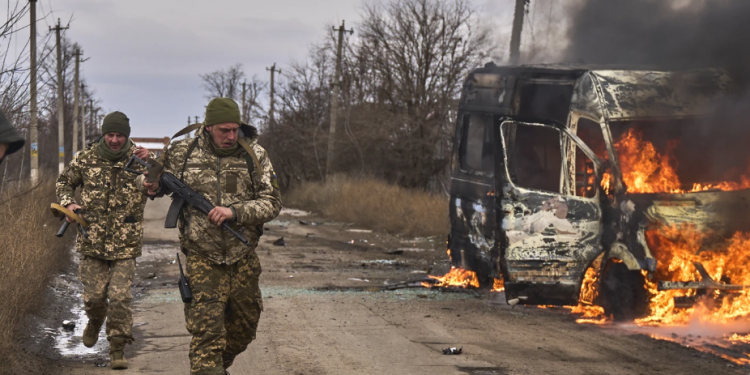24 February marks the third anniversary of Russia’s full-scale invasion of Ukraine. Kremlin’s strategy for a swift victory has faltered badly, leading to a protracted conflict where neither side has achieved significant advances on the battlefield. The initial goals of Russia’s invasion were to quickly capture Kyiv and seize control of the eastern half of Ukraine. However, Ukrainian forces successfully halted the Russian advance towards the capital, pushed them out of the north, and later executed effective counter-offensives in the east and south. In 2023, Ukraine attempted additional counter-offensives but faced challenges due to equipment shortages and robust Russian defensive positions. By 2024, the conflict had evolved into a war of attrition.
Throughout the war, Ukraine has fiercely resisted its larger and more powerful neighbour, but the situation now seems to be deteriorating significantly. Kyiv’s relationship with the United States, its primary military supporter since the onset of the war in 2022, has sharply declined in the wake of Donald Trump’s return to the White House. At present, the chances of receiving additional US military assistance appear bleak, and the possibility of a disadvantageous peace agreement—one that could compel Ukraine to cede territory to Russia—is becoming more likely.
Tensions escalated recently when US officials resumed discussions with their Russian counterparts, leaving Ukraine out of initial talks aimed at establishing peace. This development further strained the already fraught relationship between Trump and Ukrainian President Volodymyr Zelenskyy, who last week accused the US president of “living in a Russian disinformation bubble.” Hitting back, Trump described the Ukrainian president as a “dictator without elections” and warned him that he’d “better move fast” to negotiate an end to the war or risk not having a nation to lead.
Ukraine faces a potentially bleak outcome in the ongoing war, marked by significant loss of life and extensive damage estimated at up to $500 billion over three arduous years. With a military force of approximately 900,000 personnel compared to Russia’s 1.3 million, Ukraine has encountered challenges related to manpower. Since 2022, Ukraine has remained heavily reliant on Western weapons and munitions. The Trump administration has not pursued additional congressional funding for military support to Kyiv, raising concerns that the flow of US weapons may eventually halt, as occurred when funding expired in late 2023, adversely affecting Ukraine’s efforts.
Meanwhile, European governments, concerned about their limited involvement in discussions between high-ranking US and Russian officials, are taking steps to bolster support for Zelenskyy while also working to maintain strong transatlantic relations. On 21 February, European Union Defence Commissioner Andrius Kubilius, the bloc’s top defence official, announced that the EU intends to deliver a significant message of support to Ukraine through a new aid package, coinciding with the third anniversary of the war.
Russia seems to be relishing the discord between the US and Ukraine. While it has long portrayed the US as its primary adversary, the Kremlin has notably shifted its rhetoric and public stance towards Washington ever since Trump took office. Trump and his team are cosying up to Russian President Vladimir Putin in a bid to broker a ceasefire in Ukraine. In the process, they are also willing to forego the decades-old transatlantic alliance with Europe. What the Trump administration doesn’t realise is that if Russia emerges victorious, whether through military success or a shoddy peace deal with Washington, it will become an even greater threat to Europe and ultimately, most likely, also hurt American interests. Trump, like many Americans, thinks the oceans on both sides protect mainland America. Poor in history, they forget Pearl Harbor.






































